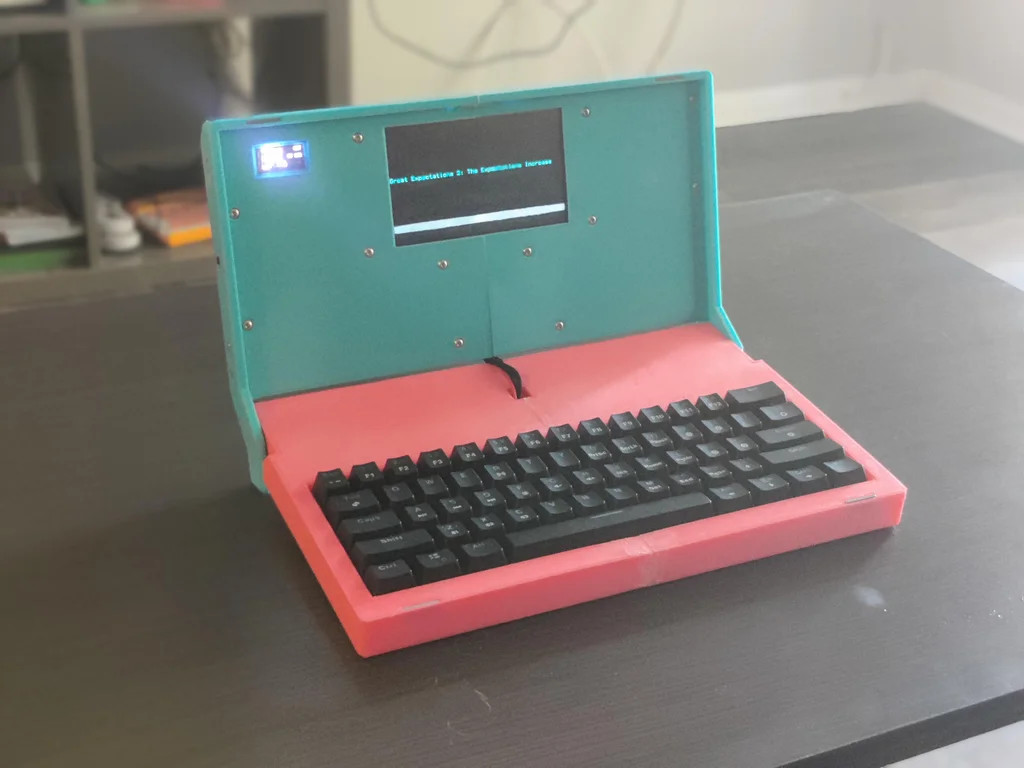I’ve tried way too many distraction-free writing devices, from the Freewrite to an old Brother typewriter. As a glutton for punishment, however, I may just build the FeatherQuill while I’m trapped at home.
The FeatherQuill is a project by Cameron Coward, a writer and hardware hacker who focuses on 3D printing. The project consists of a Raspberry Pi single-board computer, a touchscreen LCD, and a keyboard. He also added a set of rechargeable batteries to power the thing for 36 hours straight.
“I write for a living and spend most of my workday sitting in front of my desktop computer while churning out articles. I built FeatherQuill because I wanted a satisfying typing experience even when I’m out and about,” Coward wrote in a post on Instructables.
[referenced id=”1523508″ url=”https://gizmodo.com.au/2020/10/the-freewrite-traveller-is-beautiful-distraction-free-writing-that-wont-finish-your-novel-for-you/” thumb=”https://gizmodo.com.au/wp-content/uploads/2020/10/28/tfnelke5k5wc7wxgqqy1-300×169.jpg” title=”The Freewrite Traveller Is Beautiful Distraction-Free Writing That Won’t Finish Your Novel For You” excerpt=”If you’re a certain type of writer, you’ll probably think you’ll use the Freewrite Traveller every day. The entire package is alluring: it’s a portable, e-ink-powered typewriter that sends your documents to an email box instantly and is completely distraction-free. Imagine how much writing you’ll get done! No Twitter, no…”]
The system uses a Raspberry Pi Zero W — a super-small version of the Raspberry Pi — and a 5-inch touchscreen LCD. He added a smaller mechanical keyboard and then 3D printed a case.
The results, as you can see, are pretty bare-bones but sufficient for writers who are used to a blank screen. He uses an app called WordGrinder as a word processing system and DietPi as the OS. DietPi is a smaller, less power-hungry version of Linux that boots faster than Raspbian, the board’s default OS.
“Boot time, from power to WordGrinder, is about 20 seconds,” wrote Coward.
[referenced id=”1528953″ url=”https://gizmodo.com.au/2020/11/this-raspberry-pi-powered-keyboard-is-a-delight/” thumb=”https://gizmodo.com.au/wp-content/uploads/2020/11/13/swtpdek9mw6zknp0cwt9-300×168.jpg” title=”This Raspberry Pi-Powered Keyboard Is a Delight” excerpt=”Fans of DIY computing love the Raspberry Pi. This single-board computer has gone through multiple iterations and is now almost as powerful as some cheaper desktop machines. But one thing always stood in the way when it came to getting a RaspPi up and running: you had to bring your…”]
Wordgrinder actually works on Windows and Mac OS if you want to give it a try, and it offers a very austere writing interface for those looking to “just write.”

Interestingly, Coward had to print the case in two pieces and connect them together, a clever way of getting around the size limitations of his 3D printer. Obviously, you can also just buy the LCD and a Raspberry Pi 400 to create similar hardware, but this DIY kit is still ingenious.

